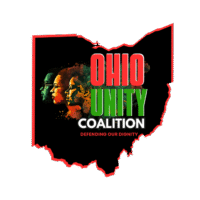By Deidra Reese

Body of John R. Lewis, Selma bridge crossing July 2020 Credit: ALYSSA.POINTER@AJC.COM
On Sunday, July 26, 2020, Congressman John Lewis crossed the Edmund Pettus Bridge for the last time in his flag-draped coffin as I was moved to tears. Like many others, I remember having seen footage of Bloody Sunday, when Lewis and other civil rights activists were beaten as they stopped to pray at the base of the bridge. Despite those horrifying remembered images, I flashed back to the triumphant march with former President Barack Obama and his family in 2015, as well as his surprise appearance at the 2020 commemoration when he could no longer march but arrived by car to wave and share his infectious spirit with the marchers.
Watching the horse pull his casket made me think of how often in the African American Community we use the metaphor of crossing over to represent arrival to a new and desired state. Sometimes the crossings have been peaceful and pleasant journeys and other times the crossing over has been full of challenges and dangers.
Many of us know the history of the Edmund Pettus Bridge and how John Lewis and so many others started out on a peaceful march from Selma headed to the Capitol in Montgomery, Alabama to protest the killing of the unarmed Jimmie Lee Jackson during a peaceful march the previous month. In both marches, the protesters were simply seeking justice and voting rights for Black people. On that Sunday afternoon of March 7, 1965, as the crowd crested to top of the bridge, they saw a crowd of police and state troopers. They expected to hear racist words and even threats of arrest, but I imagine they did not expect the bloody beatings with nightsticks, tear gas, and attacks by dogs as a response to simply standing up for the rights that others so freely enjoy. In the end, 17 people were hospitalized and 50 others were injured, including John Lewis who bore the scars of a cracked skull for the rest of his life.
As I watched the casket with the body of John Lewis stop on the bridge, I was struck by how his life was a metaphor for the experience of the journey for the rights of Black People. In 1965, John Lewis was a young man in the struggle. He was already a leader ready to put his energy and effort behind his belief that Black people had a right to vote. He knew that in Alabama alone, 30% of the people were Black but only 1% of them were registered to vote because of racist policies. He knew he had to get into “good trouble” and stand up for others. When he got to the top of the Pettus bridge and saw the police, he did not stop, he kept going despite the threat. After having been beaten and jailed many times over his lifetime, he did not allow it to deter him from the fight and struggle for justice, in fact, it fueled his fire to fight. He was not deterred by having to repeatedly introduce legislation for fifteen years to create the National Museum for African American History and Culture. He kept going until he crossed that bridge. What Bridge is in front of us as Black people today? Is it the false idea that voting doesn’t matter? Is it a lack of understanding of what is at stake in EVERY election? Is it fear because at the bottom of the bridge are enemies who might threaten us? Is it a fear of being locked up literally or even figuratively?
Have we gotten so far removed from our beliefs in our own history that we no longer believe that we can survive the crossing over of the bridge, or the turbulent rivers in our lives as Black People? Have we forgotten that together we can help each other survive the passage? Some of our ancestors survived the Middle Passage in the worst conditions ever and we are the living proof. Many of us survived being chased by slave patrols and dogs, as we made our way across the Ohio River, as we sought freedom from the bondage of slavery. Whether it was a bridge, a river, or even oceans, we have managed to “Get Over”. I imagine that as John Lewis is reunited with other giants and icons in the cause of freedom and justice who have also crossed that heavenly bridge, that he is saying to himself “My Soul Looks Back and Wonders How I Got Over”.
I believe he “Got Over” because he stayed in “Good Trouble”. Because he never gave up the fight for voter rights for Black People. He understood that the vote is a key to the house of freedom in this country. What we do with it once we open the door of that house is up to us. But the fact is unless we get IN the House, we will not have a chance to; determine how we want to live in the house; who we want to live in the house with us; what we want to serve at the table that we set up in the house; or even how we want to use the house. John Lewis understood in his youth, and even until his last day, that voting was essential. He was willing to march, enduring beatings, being berated, and knocked down. He always stood up, spoke up, spoke out, and served with dignity strength, and humility. When cancer ravaged his body to the point that he could no longer march over the bridge anymore, he still showed up to encourage those who could. In the end, he journeyed one last time over that bridge, slowly, drawn by two horses in a flag-draped casket as we honored him for crossing not just the Edmond Pettus bridge but so many other bridges. His legacy is that we can continue to cross bridges and say we cannot only look back and wonder how we got over, but we can also look forward, because of him.



